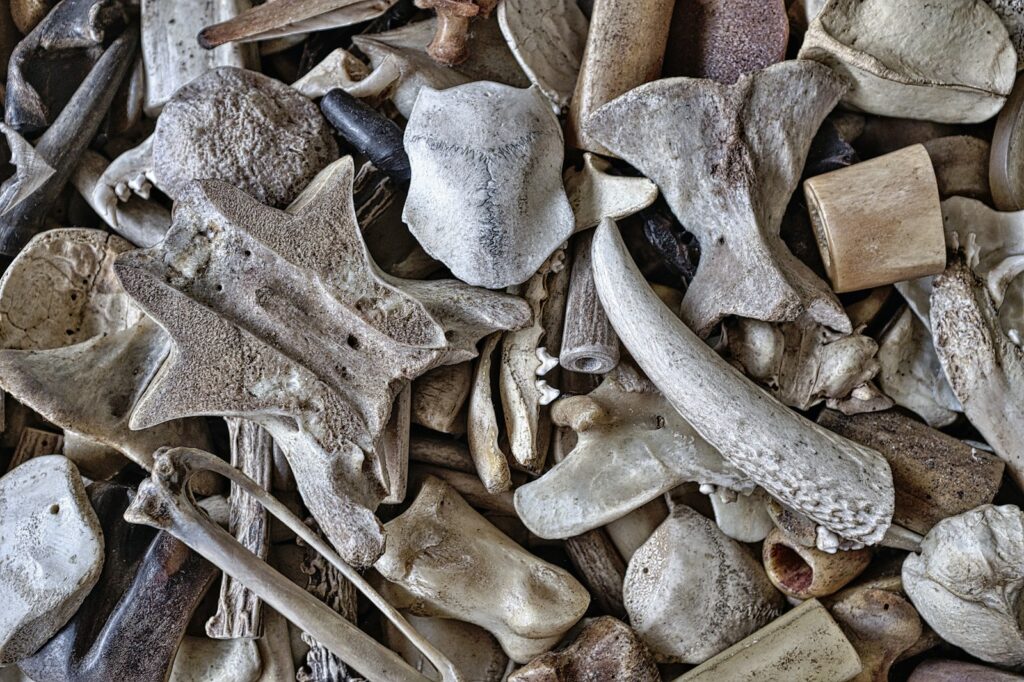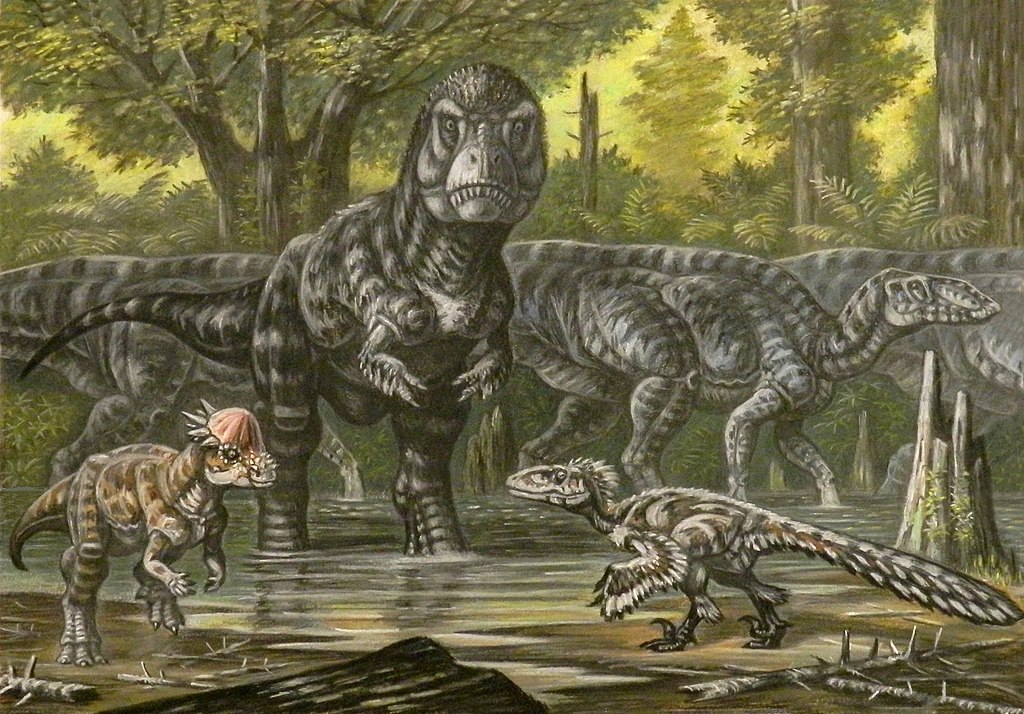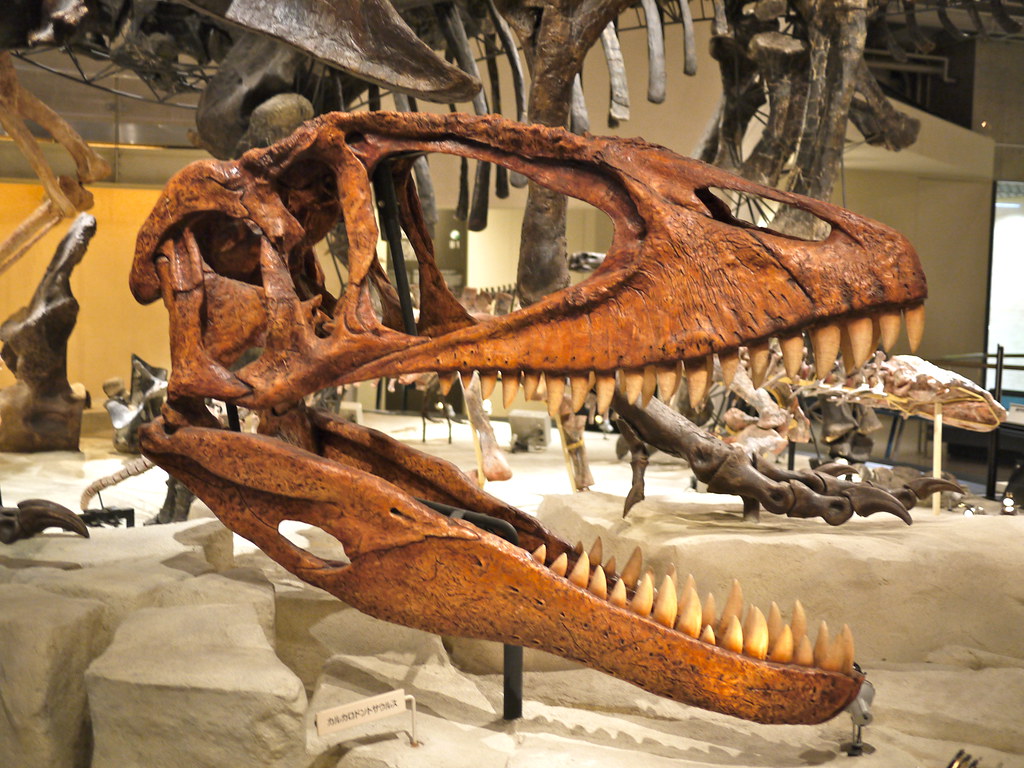Imagine a creature standing up to 33 feet tall, with arms extending over 10 feet in length, tipped with scythe-like claws measuring up to three feet long. This isn’t a description of a CGI monster from a blockbuster film—it’s Therizinosaurus, one of the most bizarre dinosaurs ever discovered. Despite its fearsome appearance, this prehistoric giant was a plant-eater that roamed Asia during the Late Cretaceous period. Its remarkable features have fascinated paleontologists and dinosaur enthusiasts alike, earning it the nickname “scythe lizard” and cementing its place as one of the most distinctive dinosaurs in the fossil record. Let’s explore this fascinating creature that seems designed by nature to blur the line between herbivore and horror movie villain.
The Discovery and Naming of Therizinosaurus
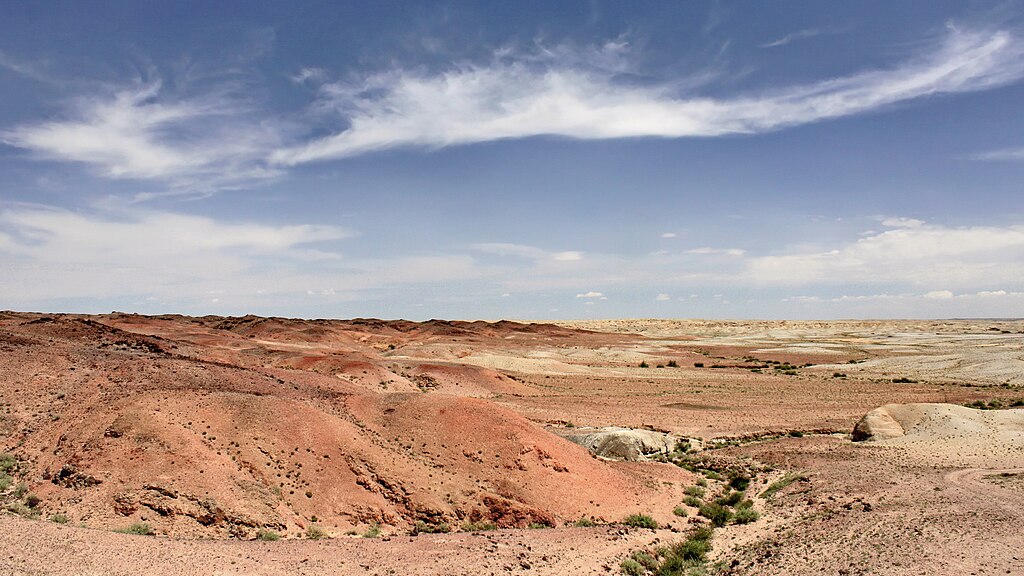
The story of Therizinosaurus begins in the 1940s during a joint Soviet-Mongolian expedition to the Gobi Desert. Initially, paleontologists only discovered the creature’s massive claws, which were so unusual that scientists first misidentified them as ribs from a giant turtle. It wasn’t until 1954 that Soviet paleontologist Evgeny Maleev formally described these fossils, naming the creature Therizinosaurus cheloniformis—meaning “scythe lizard with a turtle form,” reflecting the initial confusion about its identity. For decades following its discovery, Therizinosaurus remained a mysterious enigma in paleontology, with scientists possessing only fragments of its unusual anatomy. Additional expeditions to Mongolia in the 1970s and beyond gradually revealed more of this bizarre dinosaur’s skeleton, though a complete specimen has never been found, leaving some aspects of its appearance still subject to scientific interpretation and debate.
Evolutionary Placement: The Unusual Therizinosaurs
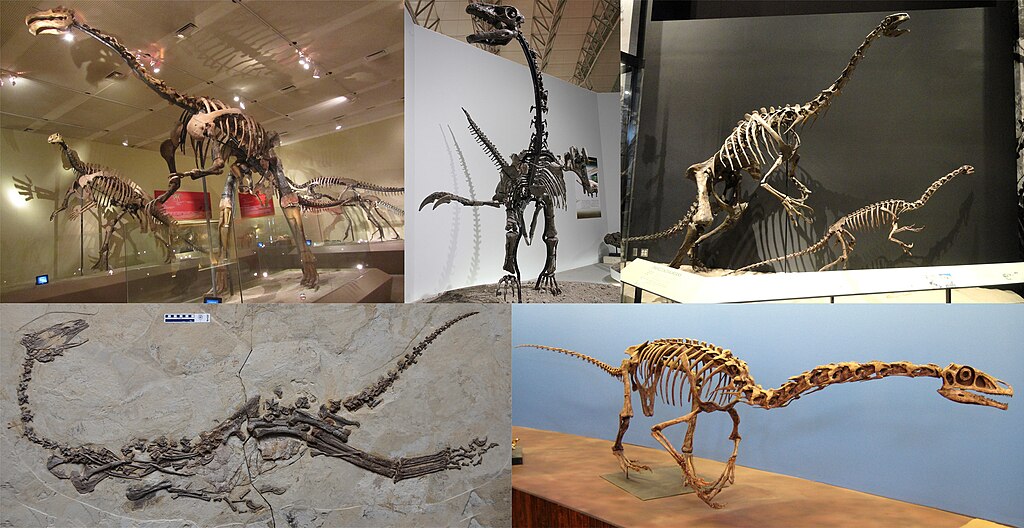
Therizinosaurus belongs to a family of dinosaurs called therizinosaurs, which represent one of the most unusual evolutionary branches of the theropod dinosaurs. Most theropods, including famous predators like Tyrannosaurus rex and Velociraptor, were carnivorous, but therizinosaurs evolved to become specialized plant-eaters. This dramatic dietary shift resulted in numerous anatomical changes that make therizinosaurs appear almost chimeric—combining features from different dinosaur groups. Their evolution from meat-eating ancestors to herbivores represents one of the most dramatic dietary shifts known in dinosaur evolution. Therizinosaurs developed several adaptations for plant consumption, including smaller heads, leaf-shaped teeth, and enlarged stomachs for processing vegetation. Paleontologists now place therizinosaurs within the maniraptoran theropods, making them surprisingly close relatives to birds despite their superficial resemblance to other large herbivorous dinosaurs.
The Infamous Claws: Nature’s Swiss Army Knife
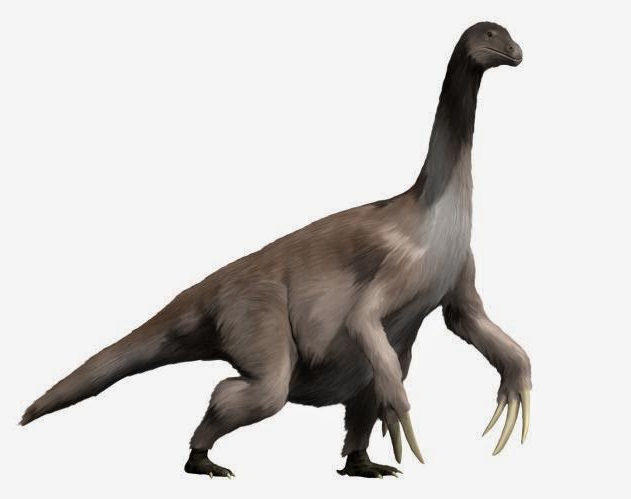
The most striking feature of Therizinosaurus is undoubtedly its enormous claws, which rank among the largest of any animal that ever lived. These curved, scythe-like appendages could reach up to three feet (one meter) in length—longer than the claws of any other known theropod dinosaur. Unlike the killing claws of predatory dinosaurs, Therizinosaurus’ claws were likely multipurpose tools rather than weapons. Scientists believe these impressive structures may have been used primarily for pulling down branches and vegetation, much like modern tree sloths use their claws to manipulate foliage. The claws could have also served as defensive weapons against predators like Tarbosaurus (an Asian relative of T. rex), creating an effective deterrent against attack. Some paleontologists have suggested they might have played a role in mating displays or social signaling among members of the species, similar to how modern peacocks use their elaborate feathers.
Body Structure and Proportions

Therizinosaurus had a body plan unlike any dinosaur alive today, combining features that make it look almost like an imaginary creature. Standing potentially up to 33 feet (10 meters) tall and weighing approximately 5 tons, this dinosaur had a relatively small head perched atop a long neck, similar to sauropod dinosaurs like Brachiosaurus. Its torso was wide and deep, likely housing a large digestive system necessary for processing plant matter. The arms of Therizinosaurus were extraordinarily long, possibly spanning over 10 feet (3 meters) when fully extended, making them proportionally among the longest arms of any bipedal dinosaur. Its legs were robust and columnar, supporting its considerable weight, while its feet featured four weight-bearing toes rather than the three found in most theropods. This unusual combination of features creates a silhouette that appears almost artificially constructed, contributing to the creature’s monster-like appearance despite its herbivorous lifestyle.
Dietary Habits: The Gentle Giant’s Menu
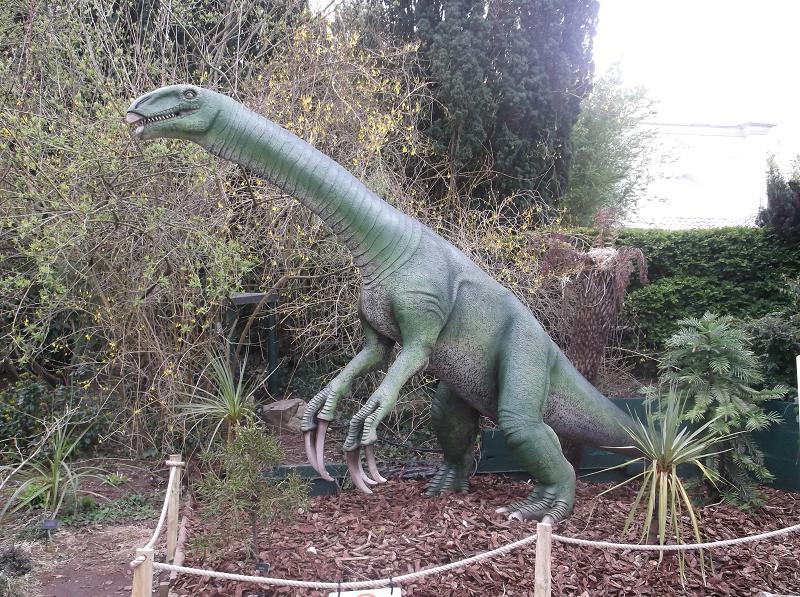
Despite its frightening appearance, Therizinosaurus was a committed herbivore with specialized adaptations for a plant-based diet. The dinosaur’s small head contained leaf-shaped teeth suitable for stripping and processing vegetation rather than tearing flesh. Its long neck would have allowed it to reach high into prehistoric trees to access leaves and fruits that might have been inaccessible to other herbivores. Paleontologists believe Therizinosaurus may have used its massive claws to hook branches and pull them down to mouth level, effectively expanding its feeding range. The creature likely had an enlarged abdomen to accommodate a lengthy digestive tract necessary for breaking down tough plant materials. Based on the environments where its fossils have been found, Therizinosaurus probably fed on a variety of prehistoric plants including conifers, ginkgoes, cycads, and early flowering plants that were becoming increasingly common during the Late Cretaceous period.
Habitat and Geographic Range
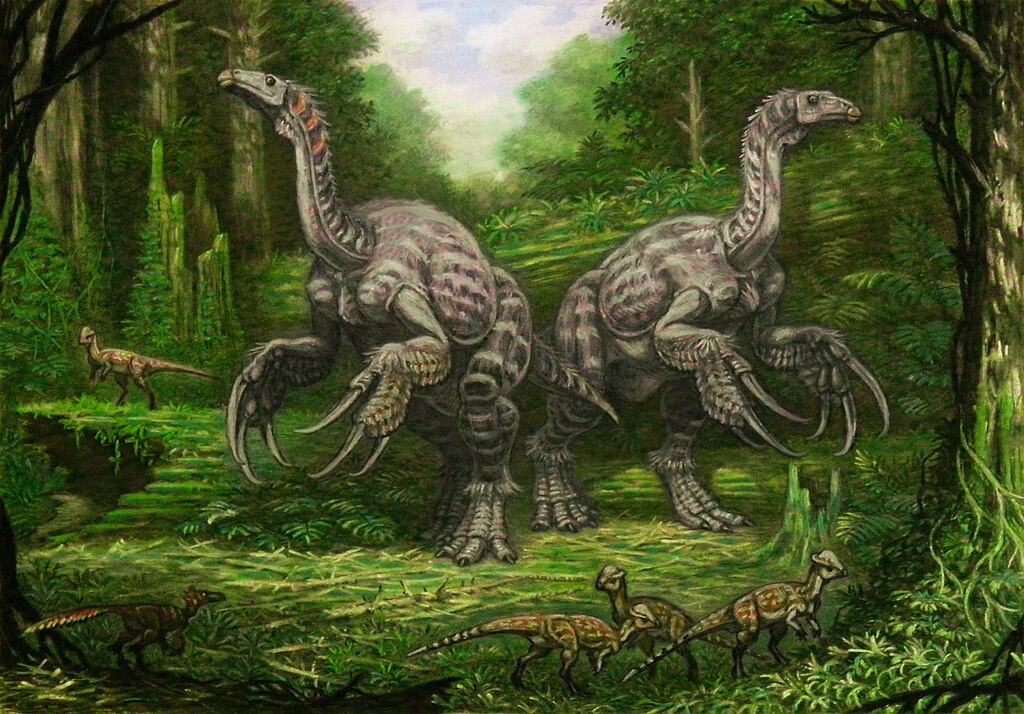
Therizinosaurus inhabited what is now the Gobi Desert of Mongolia and potentially parts of China during the Late Cretaceous period, approximately 70 million years ago. During this time, the environment was significantly different from the arid desert we see today. The region featured lush river valleys with extensive forests, seasonal streams, and diverse plant life—a much more hospitable environment for a large herbivorous dinosaur. This semi-arid woodland ecosystem supported a variety of dinosaurs besides Therizinosaurus, including the predatory Tarbosaurus, the dome-headed Prenocephale, and various ornithomimids and oviraptorids. The Nemegt Formation, where many Therizinosaurus fossils have been discovered, represents one of the richest dinosaur fossil beds in Asia. Climate studies of this region during the Late Cretaceous suggest seasonal variations in temperature and rainfall, which would have influenced the vegetation patterns and consequently the feeding habits of Therizinosaurus throughout the year.
Predators and Defense Mechanisms
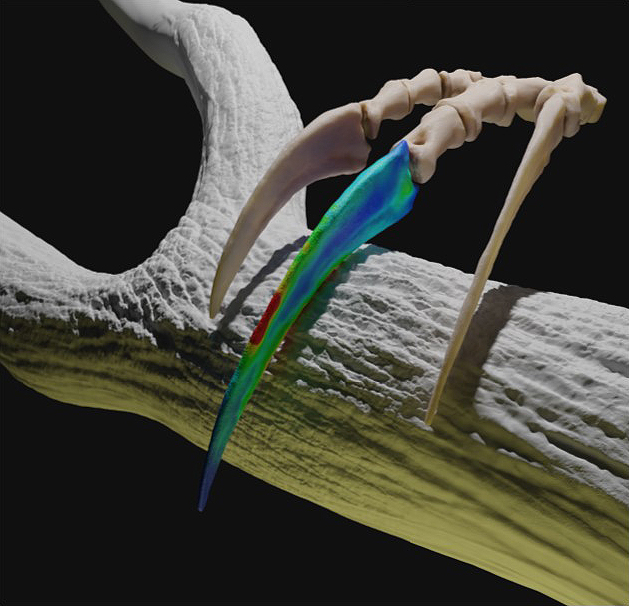
Despite its enormous size, Therizinosaurus shared its ecosystem with fearsome predators capable of posing a genuine threat. Chief among these was Tarbosaurus bataar, an Asian relative of Tyrannosaurus rex that grew up to 40 feet long and likely hunted in the same regions. When confronted by such predators, Therizinosaurus had several defensive options at its disposal. Its massive claws would have served as formidable weapons, potentially capable of inflicting serious wounds on attackers. The dinosaur’s considerable height and weight would have made it difficult for even large predators to tackle. Some paleontologists have suggested that Therizinosaurus might have reared up on its hind legs when threatened, using its long arms to create an even more imposing silhouette while bringing its claws into an optimal striking position. Young or sick individuals would have been more vulnerable to predation, but healthy adult Therizinosaurus likely faced few natural threats besides the largest theropods of their environment.
Social Behavior and Reproduction

The social habits of Therizinosaurus remain largely speculative due to the fragmentary nature of the fossil record, but paleontologists can make educated guesses based on related dinosaurs and modern analogues. Some evidence from other therizinosaur species suggests these dinosaurs may have been somewhat social, potentially moving in small family groups or loose herds for protection and efficient foraging. Like all dinosaurs, Therizinosaurus reproduced by laying eggs, though no definitive Therizinosaurus nests have been discovered to date. Related therizinosaurs are known to have laid spherical eggs in carefully constructed nests, suggesting similar reproductive behaviors in Therizinosaurus. Parental care may have been significant, with adults potentially guarding nests and caring for hatchlings until they reached a size where they could fend for themselves. The growth rate from hatchling to adult remains uncertain, but studies of bone structure in related therizinosaurs suggest they may have grown relatively quickly during their early years before slowing as they approached adult size.
Scientific Controversies and Ongoing Research
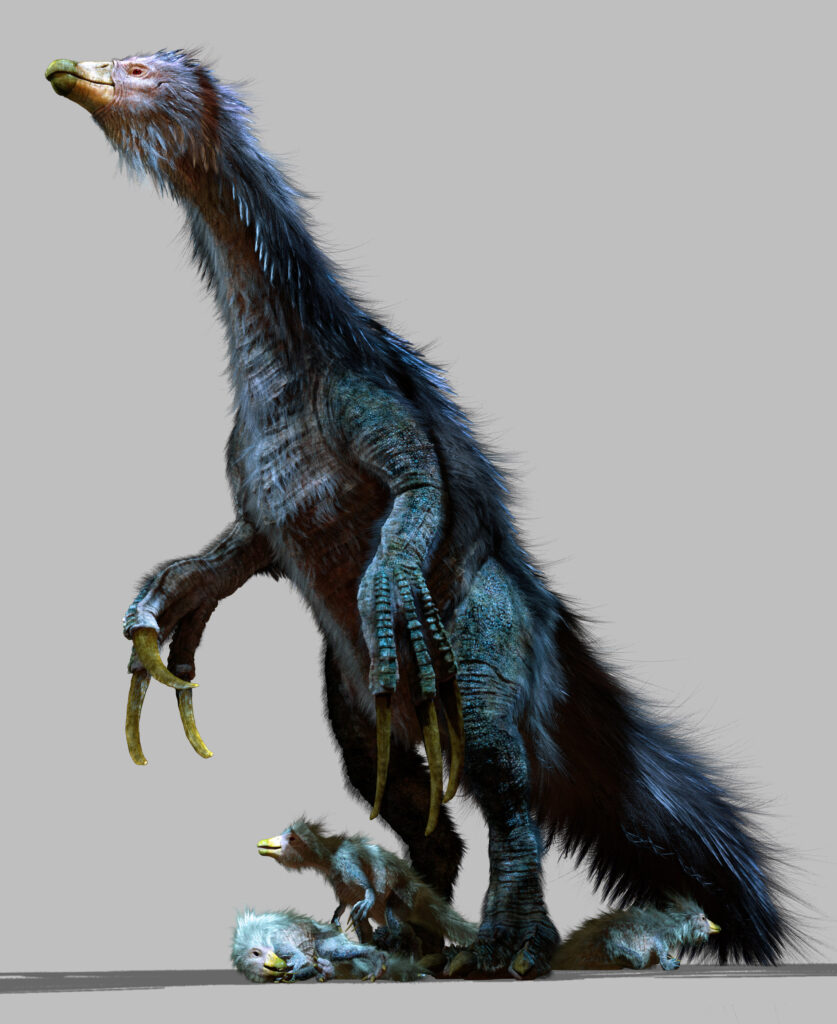
The study of Therizinosaurus continues to generate scientific debate and new discoveries. One major controversy surrounds the exact posture and stance of this unusual dinosaur, with some paleontologists arguing for a more upright, bipedal stance while others suggest it may have adopted a more forward-leaning posture similar to modern gorillas. The function of the enormous claws remains incompletely understood, with competing theories about their primary purpose still being tested through biomechanical models and comparative studies. The fragmentary nature of Therizinosaurus fossils means that many aspects of its anatomy are reconstructed based on better-preserved relatives, leaving room for significant revisions as new specimens are discovered. Recent research has focused on understanding the evolutionary pathway that transformed carnivorous theropods into specialized herbivores like Therizinosaurus, with particular attention to changes in skull morphology, digestive systems, and limb proportions. Ongoing excavations in Mongolia and China continue to yield new therizinosaur specimens that help refine our understanding of this remarkable dinosaur group.
Cultural Impact and Representation in Media

Therizinosaurus has captured the imagination of the public since its complete appearance was first reconstructed, appearing in numerous documentaries, books, and museum exhibits worldwide. Its distinctive appearance made it a natural choice for inclusion in the 2022 film “Jurassic World Dominion,” where it was portrayed as a territorial herbivore with formidable defensive capabilities. The creature has featured prominently in dinosaur documentary series including BBC’s “Planet Dinosaur” and various programs on National Geographic and Discovery channels. In video games, Therizinosaurus has appeared in popular titles such as “Ark: Survival Evolved” and various Jurassic World games, where its unique appearance and capabilities make it a fan favorite. Scientific museums frequently showcase Therizinosaurus reconstructions as examples of the extreme specialization and diversity found within theropod dinosaurs. The dinosaur’s unusual combination of fearsome appearance and herbivorous lifestyle makes it particularly valuable for educational purposes, challenging simplistic notions about predator and prey relationships in prehistoric ecosystems.
Comparison to Other Unusual Dinosaurs

While Therizinosaurus stands out for its extraordinary features, it’s part of a diverse array of unusual dinosaurs that demonstrate the remarkable adaptability of these prehistoric reptiles. Deinocheirus, another bizarre theropod from Mongolia, shared some similarities with Therizinosaurus including long arms, though it had duck-like jaws and likely fed on aquatic organisms. Therizinosaurs as a group can be compared to chalicotheres, unusual prehistoric mammals that evolved similar clawed forelimbs despite being herbivores. Other standout dinosaurs with unexpected adaptations include the pot-bellied Nothronychus, another therizinosaur with a distinctive profile; Spinosaurus, with its sail-like back and semi-aquatic lifestyle; and Deinocheirus, which combined a duck-like bill with humped back and enormous arms. These examples illustrate how evolution has repeatedly produced creatures that seem almost like movie monsters or chimeras, combining features in ways that might seem implausible if we didn’t have fossil evidence of their existence. Therizinosaurus represents one of the most extreme examples of evolutionary experimentation within dinosaur lineages.
Extinction and Legacy

Therizinosaurus vanished from Earth approximately 66 million years ago during the Cretaceous-Paleogene extinction event that eliminated all non-avian dinosaurs. This catastrophic mass extinction, likely caused by a massive asteroid impact combined with volcanic activity, dramatically transformed Earth’s ecosystems and ended the 165-million-year reign of the dinosaurs. The specialized adaptations that made Therizinosaurus so successful in its Late Cretaceous environment may have made it particularly vulnerable to rapid environmental changes following the extinction event. Despite its physical disappearance, Therizinosaurus has left an important scientific legacy as one of the most dramatic examples of evolutionary adaptation and specialization among dinosaurs. Its existence demonstrates how dramatically body plans could change to accommodate new ecological niches and dietary strategies. Modern birds, as the surviving descendants of theropod dinosaurs, carry forward some distant genetic heritage from the lineage that produced these remarkable creatures. Ongoing research into therizinosaurs continues to provide valuable insights into dinosaur evolution, prehistoric ecosystems, and the processes that drive anatomical specialization.
Recent Discoveries and Future Research Directions
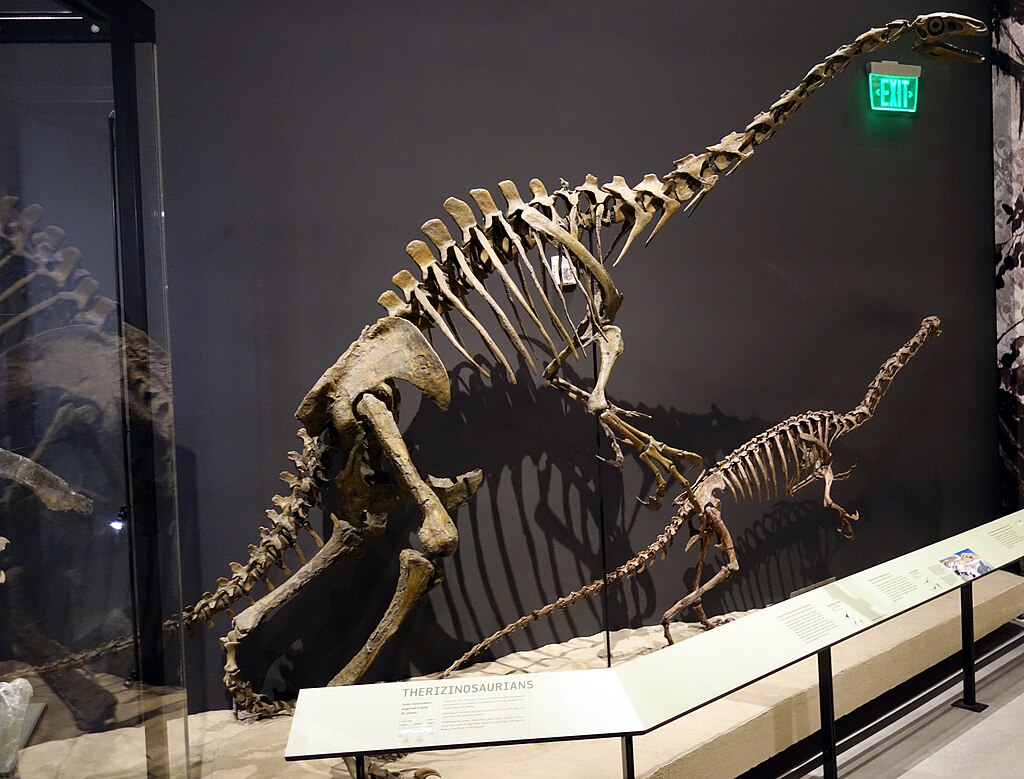
Paleontological research on therizinosaurs continues to yield exciting new insights that reshape our understanding of these peculiar dinosaurs. Recent discoveries of related therizinosaurs in North America and Asia have helped scientists better understand the group’s global distribution and evolutionary history. New techniques in paleontology, including CT scanning of fossils and sophisticated biomechanical modeling, are allowing researchers to test hypotheses about how Therizinosaurus moved, fed, and interacted with its environment. Microscopic analysis of bone structure has provided clues about growth rates and metabolic functions in therizinosaurs, suggesting they had elevated metabolisms similar to other theropods despite their herbivorous lifestyle. Future research priorities include the search for more complete Therizinosaurus specimens, particularly skull material which remains poorly known. Paleontologists are also investigating the possibility of preserved soft tissues or impressions that might reveal details about skin texture, potential feather covering, and other external features not preserved in typical fossil bones. As excavations continue in the fossil-rich regions of Mongolia and China, there remains the exciting possibility of discovering juvenile specimens that could revolutionize our understanding of Therizinosaurus growth and development.
Conclusion

From its mysterious discovery in the Gobi Desert to its starring role in modern dinosaur media, Therizinosaurus stands as one of paleontology’s most remarkable creatures. Its massive claws, unusual body proportions, and unexpected herbivorous lifestyle make it a living contradiction—a peaceful plant-eater with the appearance of a nightmare predator. This bizarre dinosaur reminds us that evolution often produces solutions that defy our expectations and that the prehistoric world contained creatures every bit as strange and wonderful as anything in science fiction. As paleontological techniques continue to advance, our understanding of this fascinating dinosaur will undoubtedly deepen, but its ability to capture our imagination and challenge our preconceptions about dinosaurs seems likely to endure for generations to come.

